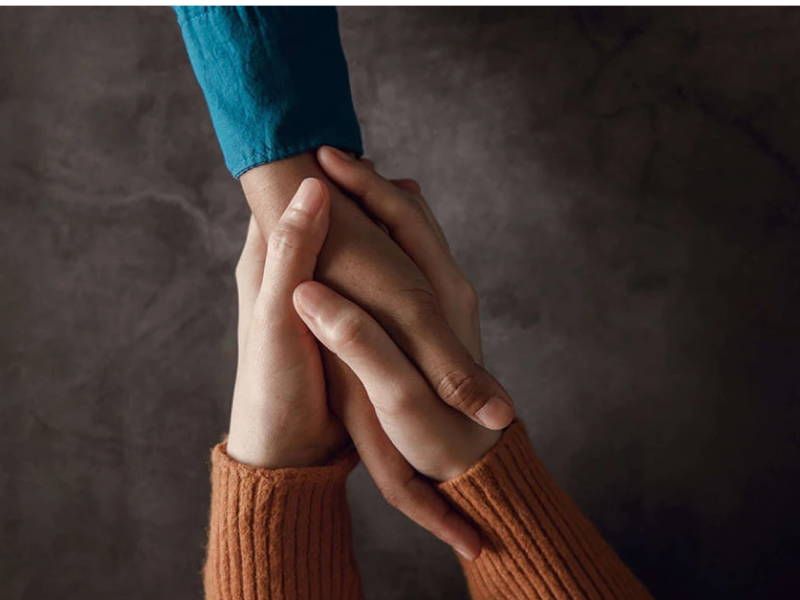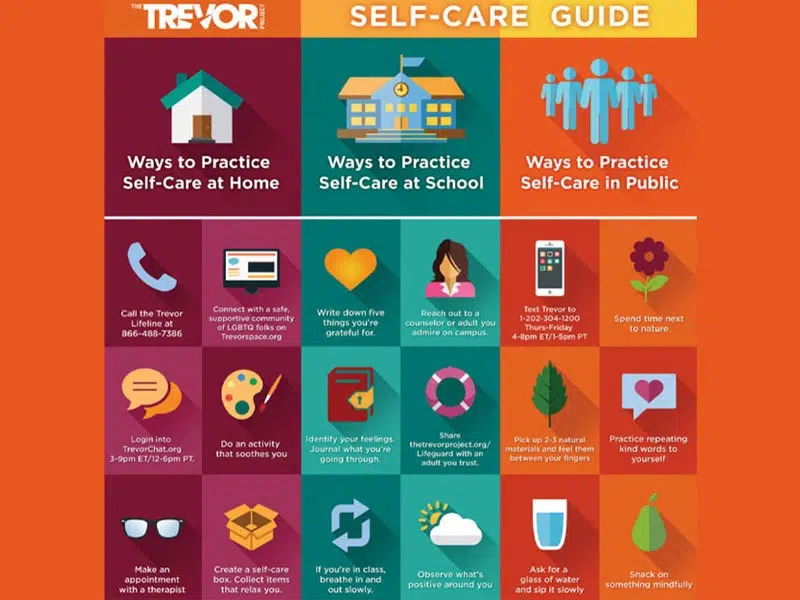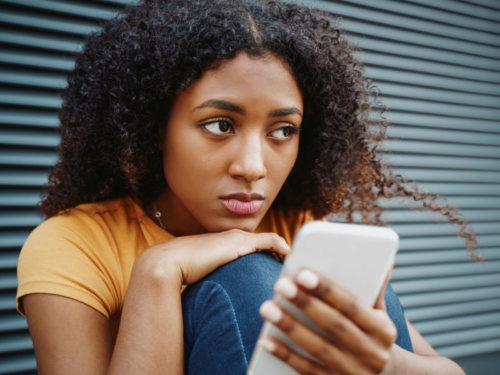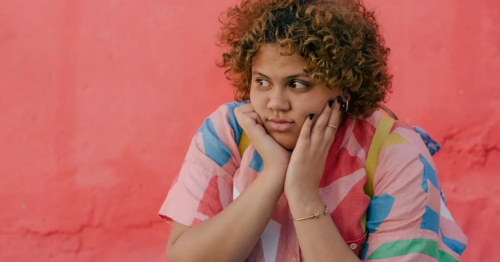
Suicide Prevention and Resources for LGBTQIA+ Youth
Written By: Charlie Health Editorial Team

Clinically Reviewed By: Dr. Don Gasparini
Updated: September 18, 2023
6 min.
Throughout the month of September, Charlie Health is committed to providing resources and information on suicide as a way to proactively combat the ongoing youth mental health and suicide crisis.
Learn more about our Clinical Review Process
Trigger warning: Suicide. If you’re experiencing suicidal thoughts or are in danger of harming yourself, this is a mental health emergency. Contact The Suicide & Crisis Lifeline 24/7 by calling or texting 988.
During this National Suicide Prevention and Awareness Month, Charlie Health is committed to providing resources and information on suicide and suicide prevention to proactively combat the ongoing youth suicide crisis. As we’ve written before, rates of both youth suicide and suicidal ideation are on the rise across the country. According to the CDC, the national suicide rate for young people aged 10 to 24 increased by 57% from 2007 to 2018.
But today, we’d like to focus on a specific subset of young people who disproportionately deal with suicide, suicidal ideation, and health emergencies related to suicide: LGBTQIA+ youth.
Latest findings on LGBTQIA+ mental health and suicide statistics
The Trevor Project is a leading research, resource, and advocacy group committed to mental health and suicide education and prevention for LGBTQIA+ youth. According to their 2022 and 2023 U.S. National Surveys on the Mental Health of LGBTQIA+ Mental Health, the current landscape of suicide in the LGBTQIA+ population is alarming. Here are some key findings from those reports:
- 41% of LGBTQ young people seriously considered attempting suicide in the past year, including half of transgender and nonbinary young people and nearly 3 in 10 cisgender young people.
- 14% of LGBTQ young people attempted suicide in the past year, including nearly 1 in 5 transgender and nonbinary young people and nearly 1 in 10 cisgender young people.
- LGBTQIA+ youth seriously contemplate suicide at almost three times the rate of non-LGBTQIA+ youth.
- LGBTQIA+ youth are almost five times as likely to have attempted suicide compared to non-LGBTQIA+ youth.
- Of all the suicide attempts made by youth, LGBTQIA+ youth suicide attempts were almost five times as likely to require medical treatment than those of heterosexual youth.
- Suicide attempts by LGBTQIA+ youth are 4 to 6 times more likely to result in injury, poisoning, or overdose that requires treatment from a doctor or nurse compared to their non-LGBTQIA+ peers.
This data underscore the importance of raising awareness among parents, caregivers, friends, coaches, and teachers about the high stakes for LGBTQIA+ loved ones. This awareness is crucial for fostering collaboration in care plans and long-term suicide prevention solutions. To read more about the current state of LGBTQIA+ youth mental health, check out our latest blog on the topic.
What are the risk factors for suicidal ideation and suicide in LGBTQIA+ youth?
Unfortunately, LGBTQIA+ youth face disproportionate challenges related to their sexual orientation, gender identity, and expression, making them vulnerable to suicide and suicidal ideation. “LGBTQIA+ youth consistently face messaging from many parts of our culture that their very existence is wrong, damaging, or damaged. Those messages get internalized, and the resulting harm can be severe,” said Charlie Health’s Co-Founder and Chief Clinical Officer, Dr. Caroline Fenkel DSW, LCSW. This internal and external stigmatization can lead to feelings of isolation, hopelessness, and loneliness, all of which have been found to increase the likelihood of suicide. “When invalidation can come from any direction, a multi-faceted, wide-reaching, and coordinated approach to care and affirmation is key,” Fenkel said.
What are some forms of suicide prevention for LGBTQIA+ youth?
There are multiple settings in which suicide prevention has to be centered, especially for LGBTQIA+ youth. These settings include school, doctor’s offices, and at home. Here’s what suicide prevention for LGBTQIA+ youth can look like in each of these places:
Suicide prevention for LGBTQIA+ youth at schools
According to the Trevor Project, creating a safe, inclusive, and representative environment in schools could significantly reduce the rates of suicide and suicidal ideation. Some of their recent research indicates that this isn’t the norm in most schools, though, with more than half of LGBTQIA+ middle and high schoolers surveyed reporting that they felt unsafe at school because of their sexual orientation. More than one-third said the same about their gender and gender expression.
On the other hand, in schools that centered LGBTQIA+ affirming programs such as using proper gender pronouns and names, building gender-inclusive bathrooms, or crafting curriculums featuring historical figures from the LGBTQIA+ community, the Trevor Project found that:
- LGBTQIA+ youth in affirming schools had nearly 40% lower odds of attempting suicide compared to LGBTQIA+ youth in non-affirming schools.
- LGBTQIA+ youth who learned about LGBTQIA+ issues or people in classes at school had 23% lower odds of reporting a suicide attempt in the past 12 months.
Suicide prevention for LGBTQIA+ youth at home
But what can individual parents or families do to foster a more positive and loving environment for their children and teenagers struggling with mental health issues while also navigating the formation of their gender identity and sexual orientation?
Advocating for change at the individual school or school district level is a good start. If this isn’t feasible in your community, though, there are lots of ways to make your home a more inclusive environment. Check out our comprehensive guide for parents looking to learn more about supporting their LGBTQIA+ teen and consider some of the following ideas:
- Practice creating a safe environment by actively listening to your kids, especially when they talk to you about their identities and their experiences.
- Strive to better your own education by reading the stories of actual people from the LGBTQIA+ community.
- Issues of identity, sexuality, and gender are often complex and evolving; remain open to change and embrace humility.
Suicide prevention for LGBTQIA+ youth at the doctor’s office
Outside of school or at home, checking in with your loved ones’ medical care team is crucial in suicide prevention as well. Primary care doctors and pediatricians often screen for suicide, so be sure to schedule regular appointments. We’ve written about the signs of suicide and other mental health issues that can exacerbate suicidality, so if you think you or someone you love needs additional support or is in acute crisis, reach out to us. (In case of a medical emergency, call or the National Suicide Prevention Lifeline at 988 or dial 911.)

LGBTQIA+-Affirming Therapy from Home
We support teens and young adults along their healing journey with affirmative care.
Self-care as a suicide prevention resource
Consistent self-care can also help ease the mental health symptoms that often contribute to thoughts of suicide. Check out this resource guide from the Trevor Project on some innovative ideas when you need a boost or are looking to help remind a loved one of how to practice some self-love:

How Charlie Health supports LGBTQIA+ youth with personalized care
Providing LGBTQIA+-affirming care is a clinically backed way to reduce rates of LGBTQIA+ youth suicide and the prevalence of other complex mental health issues.
At Charlie Health, our Research and Clinical Outcomes team has explored how personalized treatment plans for LGBTQIA+ youth affect clinical outcomes. In fact, designing more programs for LGBTQIA+ youth was identified as a critical pillar to the future of youth mental health.
In a study of a select cohort of Charlie Health clients, researchers found that LGBTQIA+ youth were more likely to deal with more acute mental health symptoms, including those related to depression and anxiety. According to the researchers, this finding indicates that these groups may benefit from additional resources tailored to their identities and needs, including coping strategies for stress, depression, and anxiety.
This finding supports what we already know: Charlie Health’s programs designed specifically for LGBTQIA+ youth are successful in helping them with their mental health needs, existing research shows. Even though many LGBTQIA+ youth had severe mental health issues when they began Charlie Health’s virtual Intensive Outpatient Program (IOP), they saw significant improvements in their depression, suicide risk, and self-harm after completing IOP.
Contact us
Charlie Health offers the first virtual program designed to address acute and severe depression, self-harm, and suicidality in LGBTQIA+ adolescents and young adults. Our team of compassionate professionals is dedicated to providing a safe space to help people explore their sexuality, navigate their gender identity, and treat their mental health concerns.
Charlie Health offers comprehensive mental health treatment for adolescents, young adults, and their families. Our virtual Intensive Outpatient Program (IOP) combines individual therapy, group therapy, family therapy, and psychiatric support to create a personalized treatment plan based on your unique background, preferences, and mental health needs.
Contact us today to start your journey toward mental wellness.




